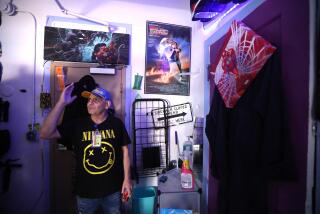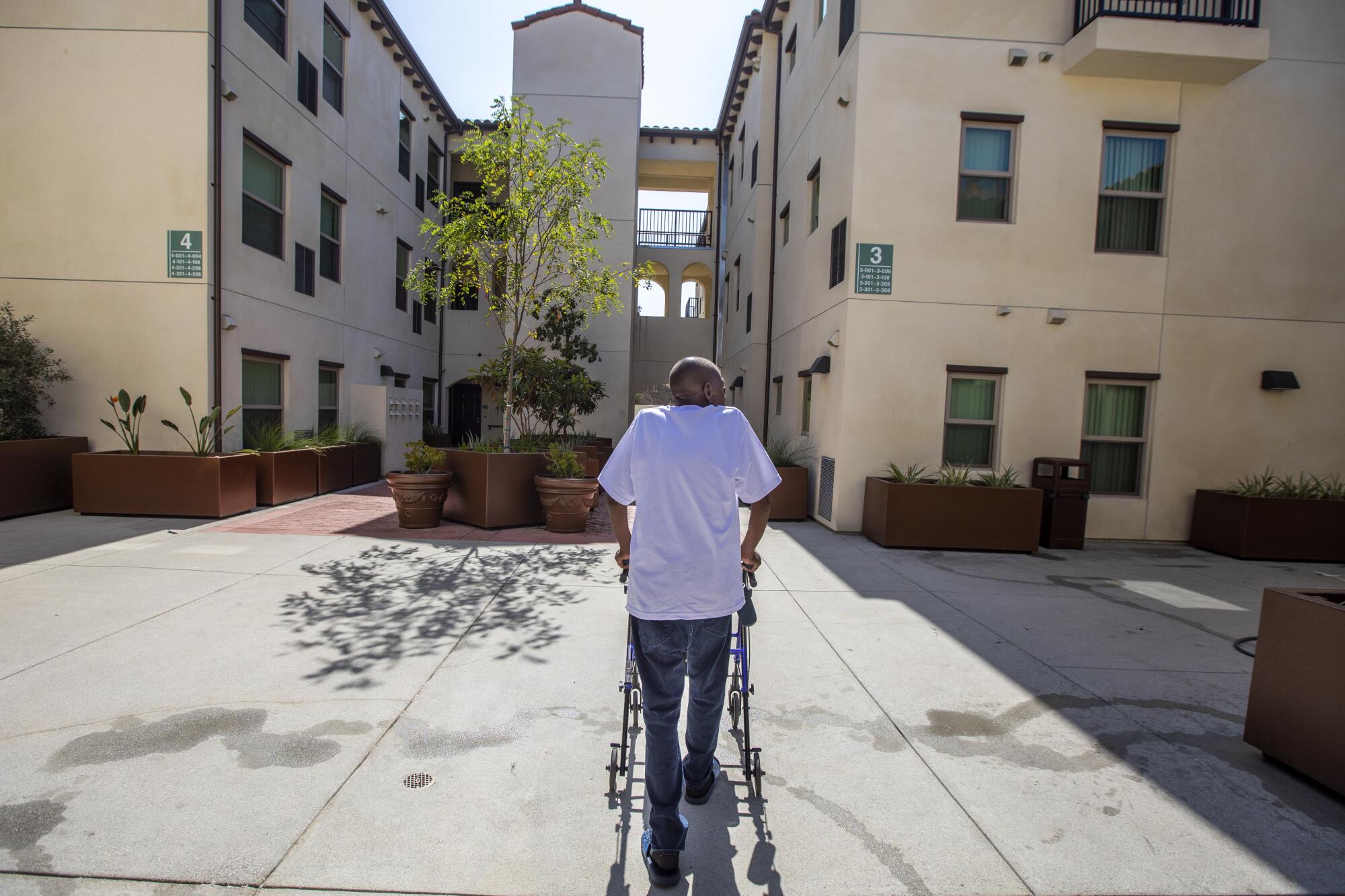
Nearly $150 million worth of federal grants to the three main housing agencies working to reduce homelessness in Greater Los Angeles went unspent between 2015 and 2020, as the number of unhoused people soared.
Instead of being used to address L.A.’s acute homelessness crisis, the money was returned to the U.S. Department of Housing and Urban Development, according to data provided to The Times by the Los Angeles Homeless Services Authority. More than 85% of the returned funds were earmarked for sorely needed permanent supportive housing.
LAHSA returned more than $29 million to HUD during the six-year period; the Housing Authority of the City of Los Angeles returned more than $82 million; and the Los Angeles County Development Authority returned nearly $38 million.
Asked why so much federal money went unspent, LAHSA spokesman Ahmad Chapman said in an email that, while the data are “imperfect,” his agency operates “in a climate where the rental market is so hard to access, it makes it very challenging to use all these resources.”
But the amount given back to HUD by the three agencies over the six years is more than the total amount of grants the federal housing agency awarded them in 2020, $133.1 million.
“Given the need in L.A., we want every single dollar utilized,” said Molly Rysman, LAHSA’s chief programs officer.
That’s not a realistic short-term goal given HUD’s “rigid” and “complex” funding system, which can make it difficult to spend funds quickly or reallocate money that can’t be used for its initial purpose, Rysman said. Instead, some of those federal dollars go unspent.
“We’ve said this to HUD over and over again,” she said. “We need a lot more flexibility.”
In emailed statements, the county and city housing authorities blamed their underspending on a range of issues. The county housing authority cited insufficient workable housing units and client referrals, poor credit and rental histories among the homeless population, and program attrition.
The city housing authority pointed to landlords’ unwillingness to rent to homeless people, the city’s tight rental market, and high unit turnover rates. It also blamed shortfalls by “program partners” in key areas including referrals, housing search assistance and case management.
A HUD spokesperson said in a statement that “[t]here are many reasons that HUD may recapture” funds. “In some cases, new projects take time to start up, and are not fully operational in time to expend their initial grants. Recipients may also have challenges finding housing units.”
!["This [home] is a true blessing," said Kellie Chandler, a new resident at Washington View Apartments near USC.](https://ca-times.brightspotcdn.com/dims4/default/555f971/2147483647/strip/true/crop/6213x4142+0+0/resize/2000x1333!/quality/75/?url=https%3A%2F%2Fcalifornia-times-brightspot.s3.amazonaws.com%2F62%2F17%2Fc2aaefee48559767351e58a86f4a%2F1171028-la-me-unspent-hud-funds-07-fo.jpg)
The amount of money L.A. County’s continuum of care program returns to HUD annually has fallen from $30.2 million for grants that expired in 2019 to $21.1 million for grants that expired in 2021, according to a July LAHSA memo. The program is led by LAHSA and coordinates housing funds for homeless people.
The memo described the recent decrease in unused HUD money as a “positive trend resulting from the sustained partnership and collaborative efforts aimed at improving the use of” the funds.
But affordable-housing developers decry the return of any funds, blaming red tape and government inefficiency for their underuse. Many say they could immediately use some of that money to house Angelenos in desperate need of assistance.
Deborah La Franchi is founder and chief executive of SDS Capital Group, which finances permanent supportive housing projects across Greater L.A. She said she was dismayed to learn that millions of federal dollars for permanent supportive housing are being returned each year by LAHSA and the city and county housing authorities.
“When Angelenos see funding reverting back to Washington, D.C., for homelessness when we have a homelessness crisis in our backyard, it creates a lack of confidence that the right solutions are in place,” she said.
::
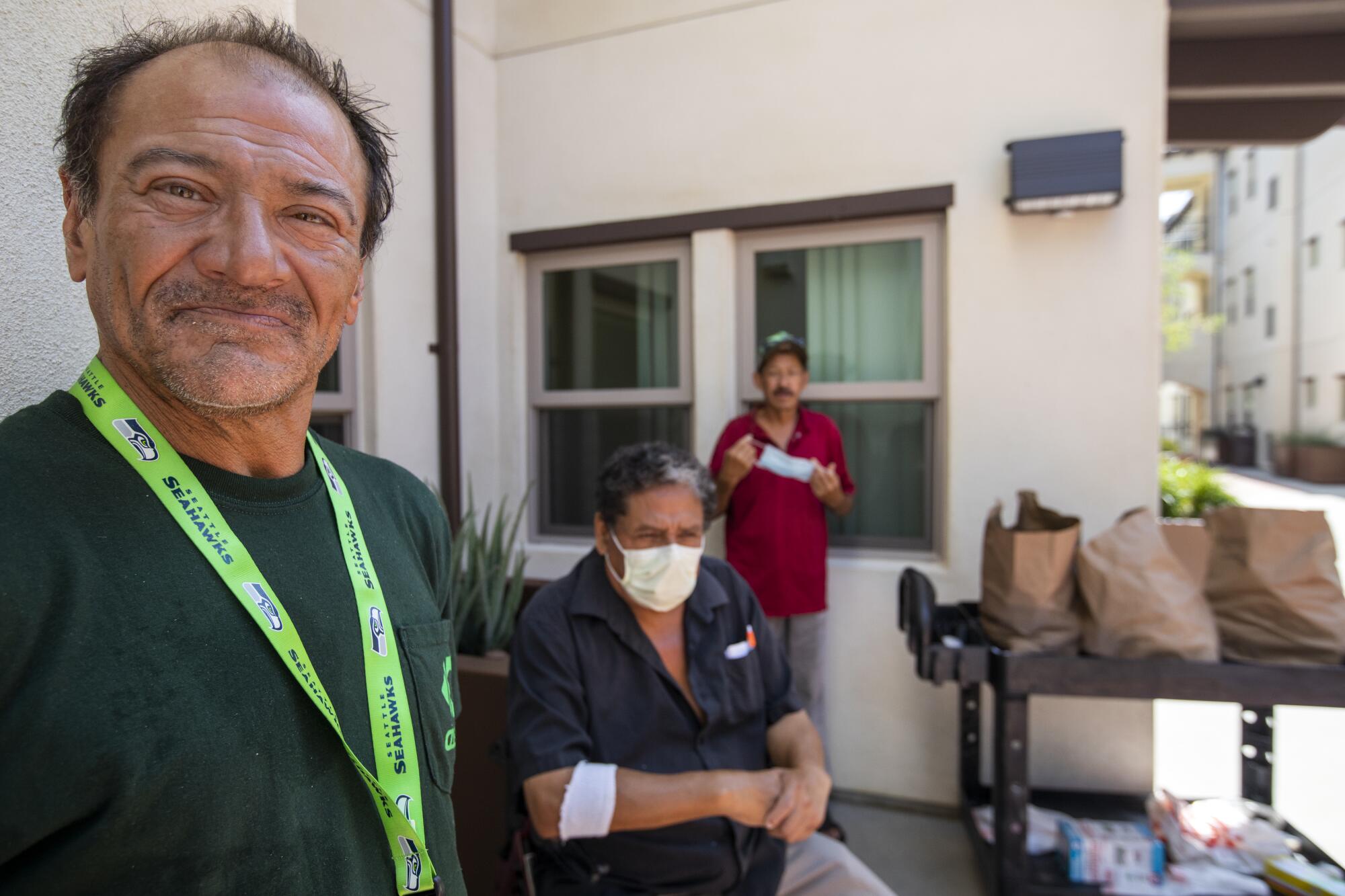
Washington View Apartments is a stucco-and-tile complex in South L.A.’s University Park neighborhood, tucked between Crypto.com Arena and the Los Angeles Memorial Coliseum south of downtown. Its 122 units sit on an underused historic site once occupied by the city’s first full-service funeral home.
The complex has four new, multistory apartment buildings. It is a 1¼-acre example of:
• The difficulties inherent in paying for and building permanent places to live for the more than 69,000 homeless people in Los Angeles.
• The confusing web of government funding supporting that effort.
• How HUD money could be used immediately — but often isn’t.
Over the last two months, dozens of previously unhoused people with disabilities, acute medical conditions, addiction or mental disorders have moved into permanent supportive units at Washington View.
“I really wanted it to be low-income because of my dad,” said developer and financier Fariba Atighehchi of L.A.-based Western Pacific Housing, choking up as she walked through the complex’s sunny courtyard. “It was his dream to do low-income housing. He never did it.”
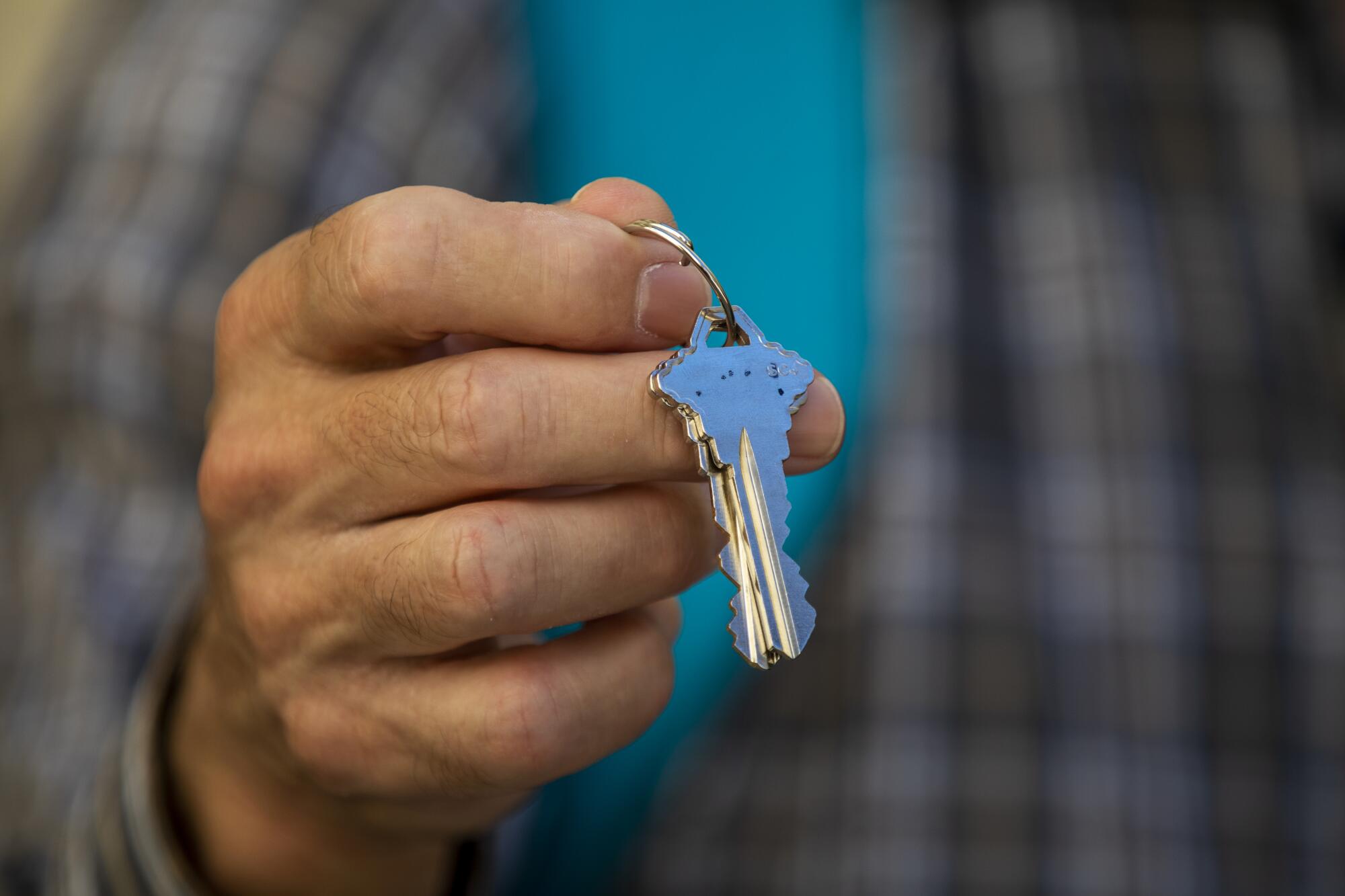
As in other supportive housing complexes, residents have been chronically homeless, and the rent they pay each month is based on their income, which is often little more than a Supplemental Security Income check. A dedicated nonprofit partner provides on-site social services, addiction and mental health treatment, and other assistance for residents.
But not everyone who has moved into the Spanish Colonial Revival-style property in recent weeks is subsidized by a permanent supportive housing voucher.
Thirty of Washington View’s apartments are simple low-income housing units with no associated supportive services. That’s because, Atighehchi said and records show, for more than two years, the city and county repeatedly denied the development team’s requests to provide enough vouchers for all of Washington View’s units to include supportive services.
The rules for awarding project-based vouchers such as the ones Washington View sought impose a variety of limits, including on the percentage of units that can typically be subsidized by the vouchers.
But housing agencies across California and the U.S. often grant exemptions to the requirements, and the reasons given for denying Washington View’s requests ranged from a lack of available vouchers to the project’s location near a highway interchange. The development team was left with no choice but to move forward with just 91 supportive units.
If some of the money the city or county housing authorities gave back to HUD had instead been used to fund the complex’s final batch of requested vouchers or otherwise back the project, Atighehchi said, all of its apartments would soon be occupied by formerly chronically homeless people receiving assistance for their most urgent needs.
It would also allow her and her partners on the project to recoup their multimillion-dollar investment and pour the funds into other affordable housing projects they are developing in L.A. and San Bernardino counties.
But it’s not quite that simple, said Rysman of LAHSA. One of the main reasons HUD funds go unspent in L.A. is because “the money isn’t going to the most useful things,” she said. “If what you want to see is more housing supply for people who are homeless, which is truly what we need,” HUD should fund more project-based vouchers, which pair rental assistance with specific housing units instead of with individual tenants.
“If we had more project-based vouchers,” she said, “we would have way more building.”
At the same time, Rysman acknowledged that her agency “probably need[s] to do a lot more” to pursue the repurposing of funds that go unspent.
The Housing Authority of the City of L.A. and the L.A. County Development Authority did not provide responses to detailed lists of questions about the unspent federal housing dollars.
The total cost of funding the additional 30 vouchers for Washington View would be about $300,000 per year, estimated the project’s development team, led by Atighehchi.
“All I need is 30 vouchers for these people that are coming in and they’re so happy,” she said.
::
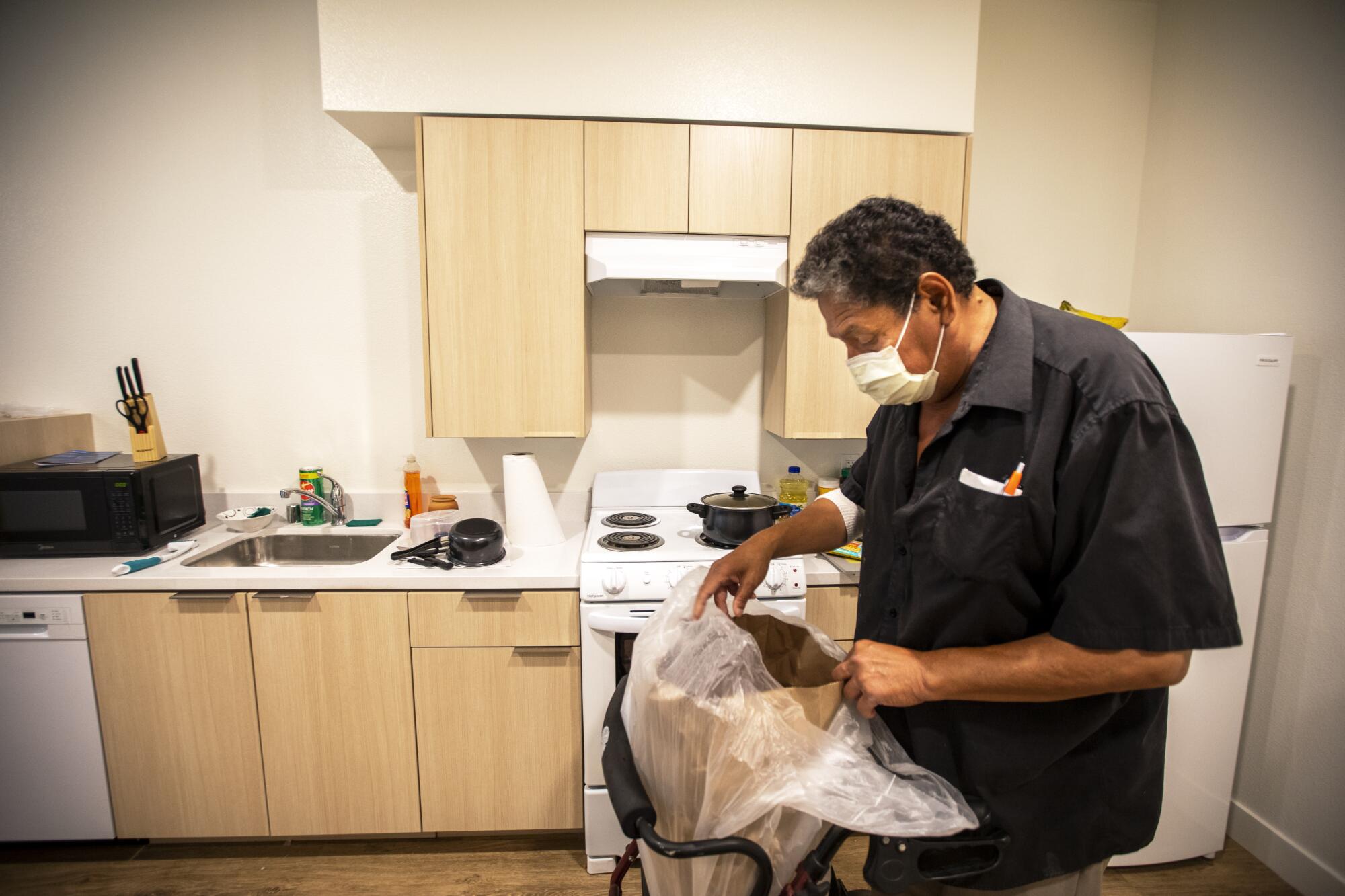
Had the agencies that provide housing to those in need disbursed more of the federal money they returned to HUD, more people like Angel Martinez could have a roof over their heads and the services they need to survive.
Ever since he moved into Washington View Apartments last month, Martinez has taken to playing “Prenda del Alma” and other songs of his youth on his cherry red Fender acoustic-electric guitar in a park down the street.
His one-bedroom apartment is the first permanent home the 63-year-old has had since shortly after his last carpentry job ended more than a decade ago.
Martinez keeps pen and paper in his front button-down pocket to jot down lyrics for his own baladas. For decades after he moved to Long Beach from Mexico at age 25, he had always found ways to make ends meet. But that was no longer the case after the bottom fell out of the U.S. housing market.
“Remember 12 years ago there was no work for nobody?” asked Martinez, who was born in Los Angeles but grew up in Mexico. “It was 12 years ago. I know that because I always relate to my granddaughter’s age. When she was born, that was when everything happened. She’s 11 years old now.”
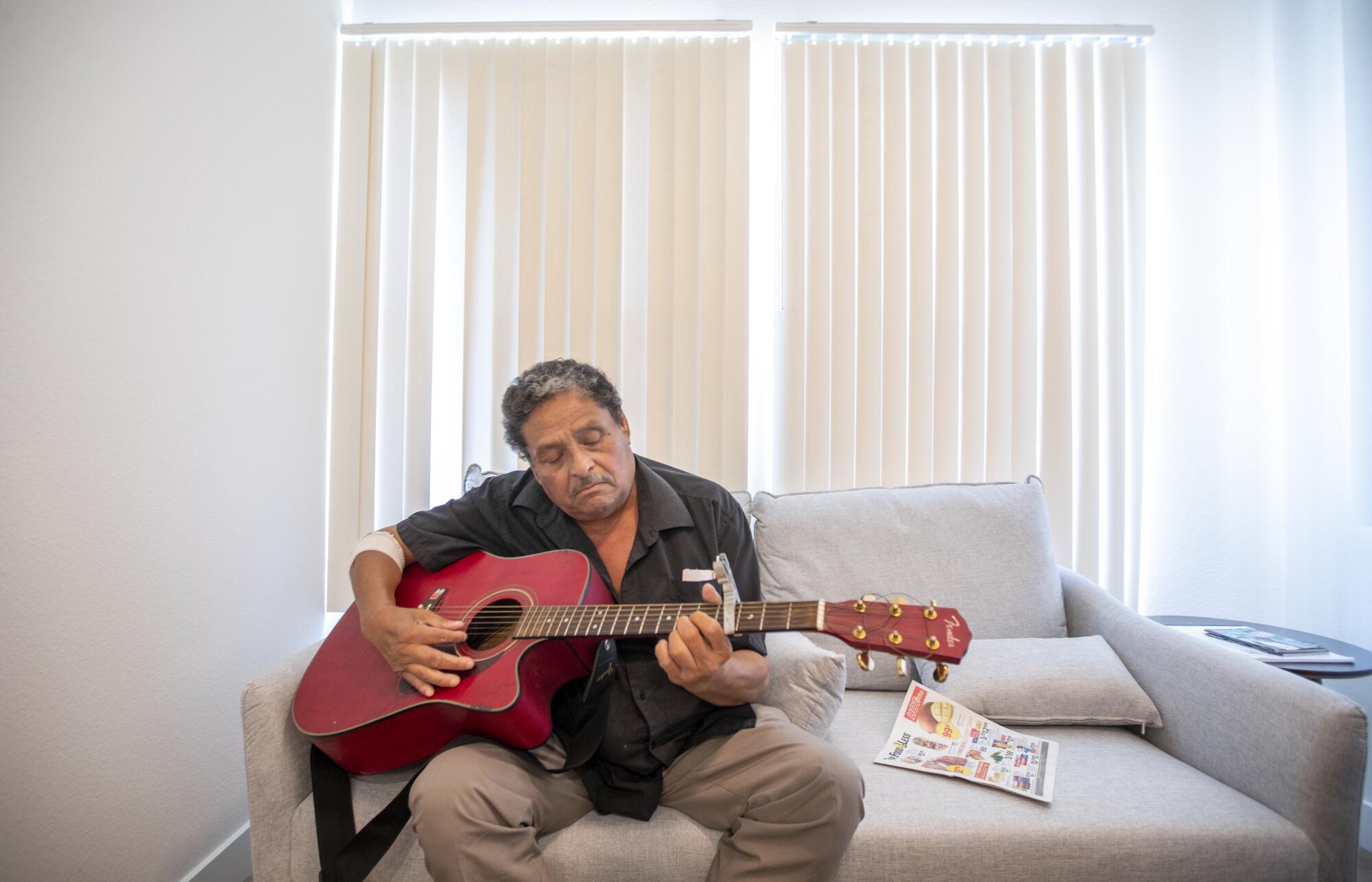
The construction industry took years to rebuild after the subprime mortgage crisis and Great Recession. During that extended downturn, Martinez lost his livelihood and his home. Sometimes he slept on the grass in parks around town. He lived in a truck for a while. He spent a few months in a shelter.
At the same time, his health was deteriorating. Diagnoses piled up. Today, Martinez suffers from diabetes, high blood pressure, and shoulder and back problems. He has an ulcer and a hernia.
So after he was released several months ago from the emergency room at St. Mary Medical Center in Long Beach, where he’d been treated for severe stomach issues, a social worker helped get Martinez off the street.
“Nowadays it’s so difficult even to rent a room in a house. Some people ask for $1,000,” he said. “I cannot work. … How can I make that kind of money? It’s impossible.”
But as a disabled, low-income senior, he was eligible for one of Washington View’s permanent supportive housing units via one of the 91 HUD-funded vouchers the complex has been granted to subsidize the rent for such apartments.
Without the placement, Martinez said, he would still be in a medical rehab facility, waiting to find out where he’d be living.
“This is a miracle. And I’m going to keep it this clean all the time,” he said, as he sat on a sleek gray couch that came in the furnished unit, along with amenities such as central air conditioning and a dishwasher.
“When they don’t have a place like this ... they send people to the shelters in downtown L.A.”
::
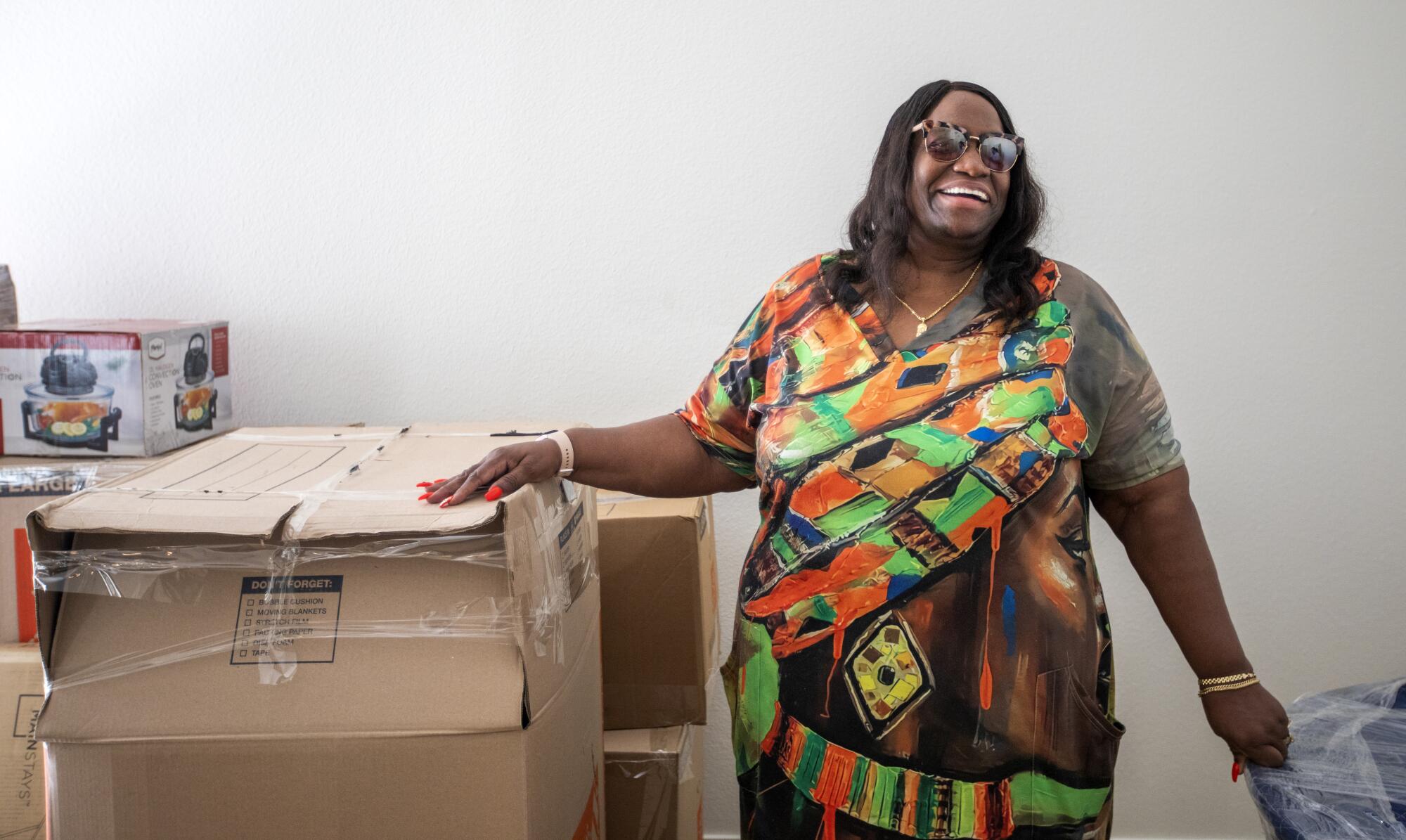
Diane Reed barked instructions at a pair of movers, as they loaded furniture, racks of clothing and other belongings from her 10-by-15-foot storage unit into a first-floor Washington View apartment.
“Just put it right there, and the TV stand’s going to go over there where that black chair is,” she told them one morning in early September, pivoting around her new open-concept living area. The 65-year-old beamed, recounting the perks of her new apartment: high ceilings, untouched oven and refrigerator, no more roommates.
Her apartment is in the same complex as Martinez’s, but supportive services are not included. Reed’s is standard affordable housing, meaning that income — not disability status or medical or mental health issues — was the key criterion necessary to qualify for her unit.
She also had to have been previously unhoused, a stipulation for any project financed in part by L.A.’s Proposition HHH Supportive Housing Loan Program, which voters approved in 2016 to help drive more permanent supportive housing development. Washington View received a $12-million loan from the program in 2018.
Affordable housing subsidized by HUD’s Section 8 program is also in short supply. It’s a necessary part of the solution to the housing crisis that for decades has helped provide shelter for many thousands of Angelenos. But the need is not as great and the circumstances of people such as Reed who move into standard Section 8 units are not typically as dire as those who move into permanent supportive housing.
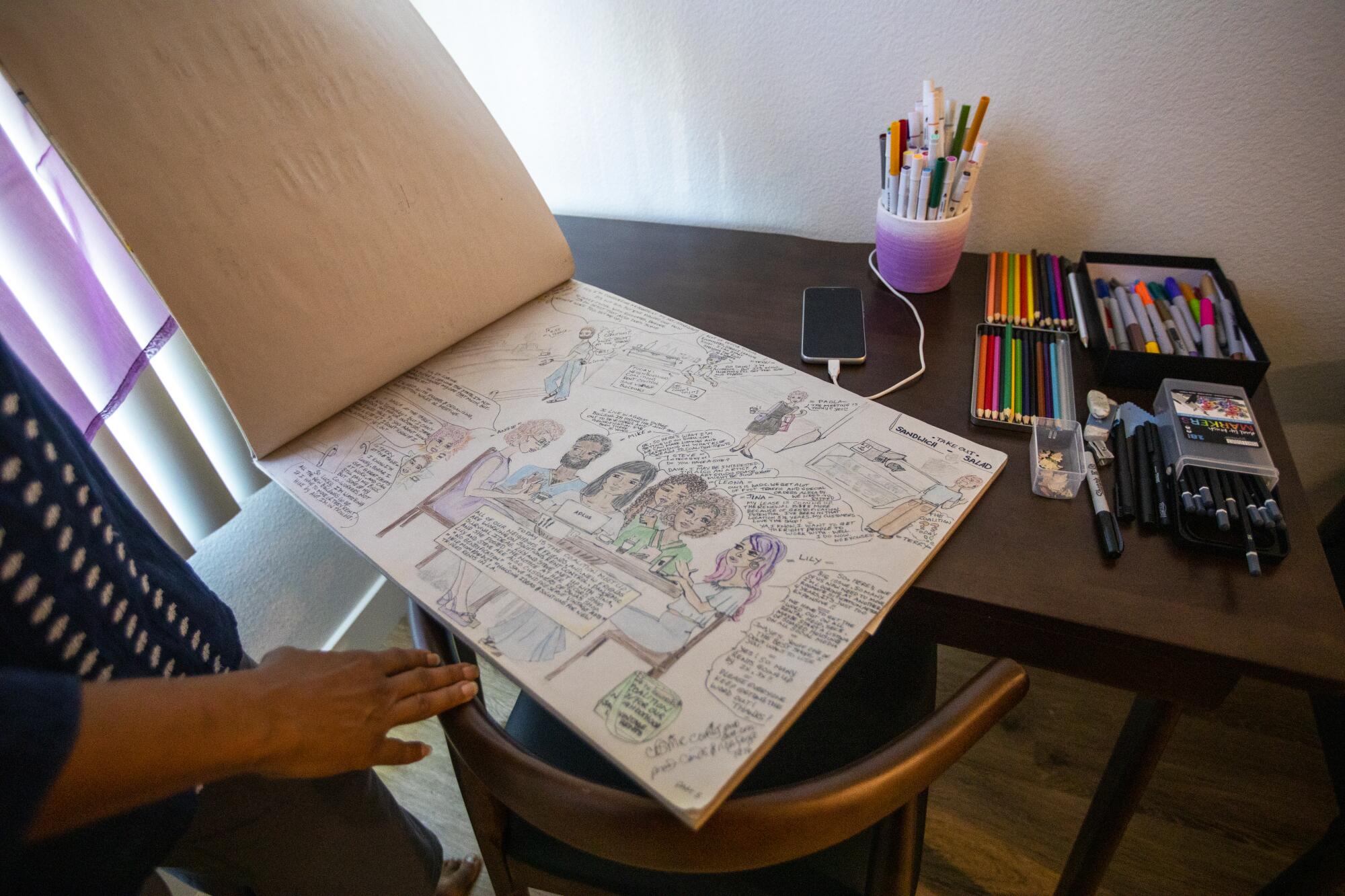
For about two decades Reed didn’t earn enough to afford her own place. She “slept in and out,” often crashing at family members’ homes, before she was selected via lottery to move into Washington View.
“I waited a long time. I’m so overwhelmed. It is a big day,” said Reed, who was born and raised in L.A. and has three adult children and five grandchildren. “It feels good to have your own space.”
As with other Section 8 housing, Reed’s rent is subsidized by HUD; she pays only 30% of her income to live in the apartment. But her apartment is not supportive housing; it’s one of the 30 affordable apartments that could instead be occupied by some of the very neediest people.
People like Daniel Castro, who never had his own apartment before he moved into a small one-bedroom permanent supportive housing unit at Washington View last month.
A self-described longtime “transient,” Castro said his kidney was removed when he was 8. Fifty-one years later, he suffers from a host of health problems, from scoliosis and hypertension to an enlarged prostate and chronic kidney disease.
An intermittent maintenance worker for much of his life, Castro’s done just about every odd job there is: chopping down trees, cleaning out garages, washing cars, planting grass. He’s now disabled, but he said he’d like to work a couple of hours a week between dialysis appointments.
Having a stable home to come back to and reliable access to support has made that modest goal seem a little more possible, Castro said.
“This is a new beginning and I’m just very grateful and thankful.”
More to Read
Sign up for Essential California
The most important California stories and recommendations in your inbox every morning.
You may occasionally receive promotional content from the Los Angeles Times.


